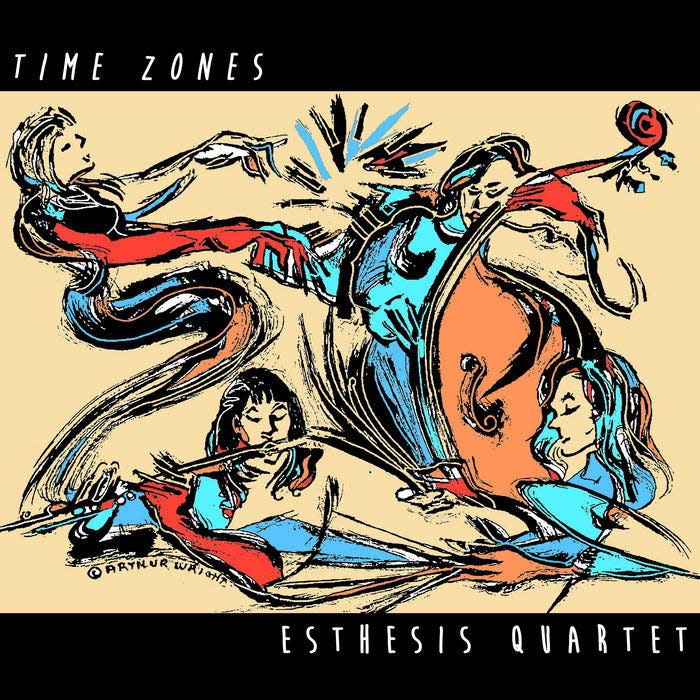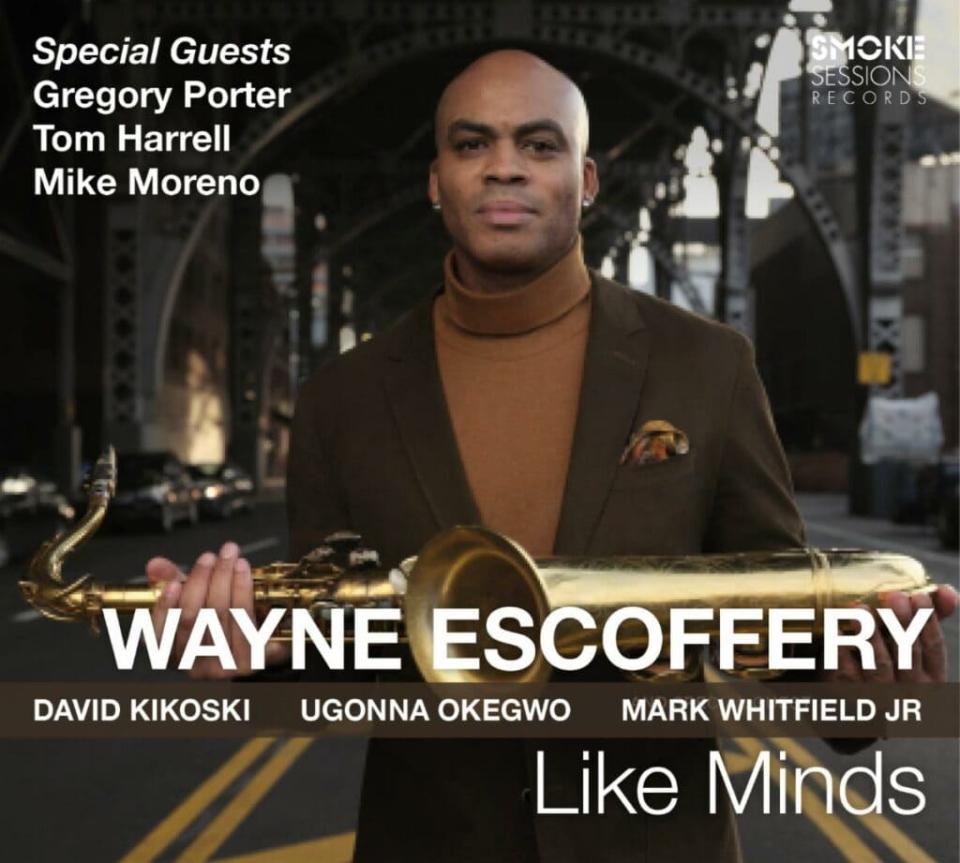Recent jazz records show off individual, collective talents

They’ve stacked up again. Propagated. Records filled with goodness and good sounds. Here they are, in no particular order.
John Bailey, “Time Bandits” (Freedom Roads) Just how the hell could trumpeter John Bailey go wrong leading a quartet comprised of pianist George Cables, bassist Scott Colley and drummer Victor Lewis? Well, you can’t.
Not necessarily a household name, Bailey is well-known within jazz circles and as a lifelong private educator.
“In American culture, where the arts are often ignored or deemphasized in both schools and the mainstream media, it is up to us, the artists, to inspire an appreciation for great art," he says.
“By keeping performance standards as high as possible and sharing our devotion with others, especially children, we enrich countless lives" — which is to say, “Time Bandits” does just that from start to finish.
Wayne Escoffery, “Like Minds” (Smoke Sessions) Saxophonist Wayne Escoffery, a native Londoner who arrived in New York in 1999, epitomizes someone who — while tremendously talented — remains equally dedicated to honing his craft. At this point, he’s been a “sideman” with scores of ensembles, but he’s also been a steady, years-long leader.
On his recent release, “Like Minds,” he surrounds himself with what I would call a substantial rhythm section: pianist David Kikoski, a fellow Mingus Big Band/Mingus Dynasty compatriot; veteran bassist Ugonna Okegwo and drummer Mark Whitfield Jr., who is only chronologically young — but certainly not as far as his seasoned talent goes.

“Like Minds” is a clear reflection of Escoffery’s “spot” in present-day jazz: he’s a modernist, but someone who pays attention to and has great respect for the grand tradition preceding him. The nine selections here include five originals, as well as interpretations of Mingus’ “Nostalgia In Times Square” and Duke Pearson’s film noir-ish “Idle Moments,” which houses a beautiful, blues-like Escoffery solo.
Beyond that, “Like Minds” is intermittently boosted and enhanced by others, including trumpeter Tom Harrell, one of Escoffery’s long-time employers; vocalist Gregory Porter; guitarist Mike Moreno, who shines particularly on the saxophonist’s “Sincerely Yours”; and percussionist Daniel Sadownick.
Esthesis Quartet, “Time Zones” (EarsAndEyes). I have no problem admitting that even after catching Esthesis Quartet’s distinctly original, improvisation-driven set at January’s Jazz Education Network gathering in Orlando — and listening to the group’s Denver-based pianist Dawn Clement explain just how they came up with their name — I didn't retain that specific piece of information. So I decided to re-visit Merriam, as in Webster, to secure the following:
“Esthesis, noun. ... sensation, especially: rudimentary sensation.”
OK, now I get it. Sort of.
The group also made a point to explain that they formed online during the pandemic, and that each lives and directs — or would soon be directing — jazz programs at institutions of higher learning located in four different time zones. Hence “Time Zones” serves as the sophomore release’s title.
The group’s modern-day melting pot evolution might be considered organic, but in Esthesis Quartet we have four creative and fearless musician-spirits; in addition to Clement (Mountain time), who also contributes voice, the group is comprised of Elsa Nilsson (Eastern), who plays flute both acoustically and with effects; bassist Emma Dayhuff (Central); and Tina Raymond, a California-based drummer (Pacific).
“Time Zones” is a seven-selection, original adventure. The closing tune, Nilsson’s “Getting Through,” resembles a straight-ahead romp of sorts; whereas Raymond’s “Brush Fire” is a Latin/Spanish-tinged piece; and Clement’s “The New Yorker” is free-floating and ethereal, a largely improvisational piece based on a Megan Fernandez poem. If you bring your ears to this one, then you’ll be fine.
Jim Snidero, “Far Far Away” (Savant) Alto saxophonist Jim Snidero continues to be a prolific artist, remaining interested in exploring and incorporating different elements into within his musical horizons. “Far Far Away,” release number 25 for him, calls upon a duality of sorts.
His piano, bass, drums rhythm section sees the respective return of Orrin Evans, Peter Washington and Joe Farnsworth, a triumvirate that shines individually and collectively throughout the proceedings. At some point, those three — I don’t think they have done so yet — should consider delivering a trio escapade.
In this instance, Snidero wrote six of the eight compositions here; all but McCoy Tyner’s great ballad “Search for Peace” and “It Might As Well Be Spring,” also a ballad, written by Rodgers and Hammerstein. He joins forces with guitarist Kurt Rosenwinkel throughout, recognizing him as the session’s featured collaborator.
“Far Far Away” simply features a standout ensemble, a fivesome of consummate professionals, each exceptionally capable, and each a tremendous improvisor. Take a listen to the leader’s solo during his “Nowhere to Hide”; listen to Rosenwinkel’s work on “Infinity,” as well as on other selections. There’s multiple, inviting unison passages between the two of them as well.
To his credit, Snidero recognizes, in current baseball terms, “the length of the lineup” here, the musical arsenal at his disposal. So it’s hardly surprising the altoist gives everyone involved plenty of opportunities to express themselves. It’s almost as if Snidero cheats with “Far Far Away” — with those involved in this session, it’s pretty much as close to a can’t-miss date as one can orchestrate.
Jon W. Poses is executive director of the “We Always Swing” Jazz Series. Reach him at jazznbsbl@socket.net.
This article originally appeared on Columbia Daily Tribune: Recent jazz records show off individual, collective talents

